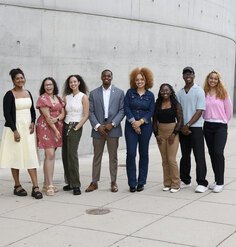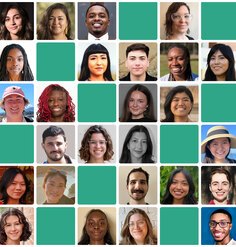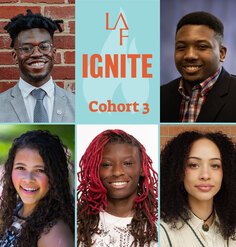Olmsted Scholar Feature: Trails on Tribal Lands
By Nick Deyo, 2011 University Olmsted Scholar
For my Master's degree work I was fortunate to collaborate with a team of students at the University of Michigan’s School of Natural Resources and Environment. Our project helped community members and tribal employees with the planning and design of a non-motorized trail system in the Jocko Valley, on the Flathead Reservation in Montana. My team included two landscape architecture students: Robin Burke and myself; Meredith Bohdan, an Environmental Policy and Planning student; and two Behavior, Education, and Communication students: Ann Kelley and Brittney Van Der Werff. Working with this team helped me realize the true interdisciplinary nature of landscape architecture. We worked closely with the Jocko Valley Trails Committee and the Confederated Salish and Kootenai Tribal (CSKT) government, through meetings and public outreach, to create trail design recommendations. On a broader scale, we researched the current status of trail systems on American Indian reservations throughout the United States.
During May of 2010, we spent an intensive four weeks working on the project in Arlee, Montana, a town of 600 people located at the southern end of the Flathead Reservation. We engaged the community in trail planning activities, conducted site visits, and met with project partners. We distributed a survey to gauge community interest in trails development, hosted an open house, and conducted Youth Visioning Workshops with over 150 high school, middle school, and fourth grade students.
Site visits acquainted us with areas of specific design concern, including the Demonstration Reach portion of the Jocko River Restoration Area, where the CSKT Natural Resources Department sought to develop an interpretive trail system. The Demonstration Reach marks the beginning of 22 miles of state-of-the-art river restoration work the tribe is performing, using natural channel design along with passive restoration techniques, to create habitat for endangered bull trout. Other areas of concern included Highway 93’s Jocko River Bridge, a dangerous 400-foot span that lacks pedestrian facilities.
After returning to Michigan we spent the next year developing three conceptual interpretive trail designs, supported by detailed site inventories and analyses. These options worked within CSKT’s constraints to showcase the impressive ecological restoration work the tribe had accomplished and educate about the natural history and conservation needs of bull trout. We analyzed the data we gathered from community activities to provide specific design solutions including pedestrian crossing options for the Jocko River Bridge area, trail alignments, and planting designs.
Finally, inspired by the leadership of the Arlee community, we wrote a paper entitled Trails on Tribal Land: Understanding the Challenges and Benefits of Trail Planning and Development for American Indian Communities. This paper was a compilation of both literature review and interviews conducted with natural resource managers, scientists, planners, and other decision makers from 22 reservations throughout the United States. The full project is available here: http://hdl.handle.net/2027.42/83543.
Nick Deyo received his Master's of Landscape Architecture from the University of Michigan in May 2011. He lives in Tucson, Arizona where he is engaged with conservation planning and ecological restoration projects working for the NGO Sky Island Alliance.










